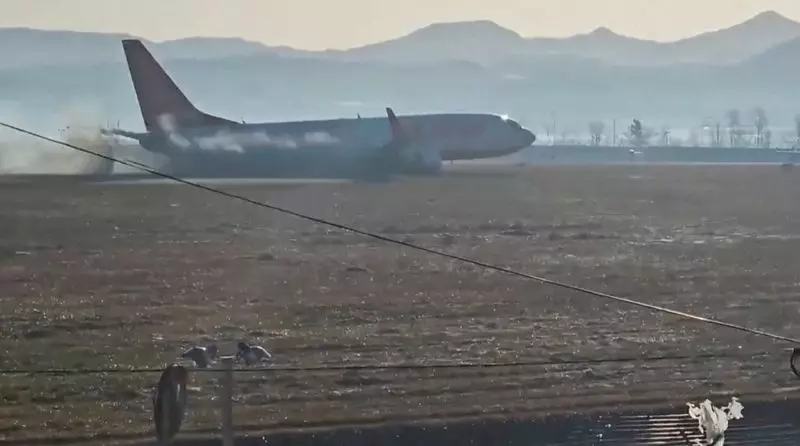The crash of Jeju Air Flight 7C2216 has emerged as one of the most tragic aviation disasters in South Korea’s history, raising numerous questions and concerns regarding aviation safety protocols and emergency response measures. On a fateful day at Muan International Airport, the Boeing 737-800, which was carrying 181 passengers and crew, was forced to execute a belly landing without its landing gear deployed. The incident resulted in mass casualties, with 179 lives lost. Shortly after the calamity, reports of a possible bird strike surfaced, prompting investigations into its role in the crash.
In the moments leading up to the crash, a chain of events occurred that left both aviation experts and authorities puzzled. Eyewitness footage depicted the aircraft skidding down the runway in an uncontrolled manner prior to crashing against a wall, followed by an explosion. As the situation evolved, the control tower issued a bird strike warning, and the pilots declared a mayday, signaling imminent danger. The subsequent attempt to land the aircraft only added to the confusion, as it happened from an unexpected direction, potentially complicating an already dire situation.
The juxtaposition of these events raised pertinent questions: Why was the aircraft traveling at such a high speed? What caused the landing gear to remain retracted? Why were the plane’s flaps not deployed to assist in a safer landing? Gregory Alegi, an aviation expert, emphasized the larger conundrum facing investigators, stating that the primary concern is the inability to grasp a complete understanding of the circumstances that led to the disaster.
Bird strikes are a well-documented concern in aviation that can lead to catastrophic outcomes if not properly managed. While they are typically manageable and do not always result in severe accidents, in this case, they were posited as a possible factor leading to the crisis. Aviation consultant Trevor Jensen pointed out that while bird strikes occur regularly, they rarely account for the entire loss of an aircraft by themselves.
Christian Beckert, a flight safety expert and Lufthansa pilot, expressed skepticism about the bird strike’s correlation with the deployment of the landing gear, suggesting that the equipment’s malfunction or failure to lower properly is more likely a factor. This points to potential underlying technical issues or pilot decisions made under pressure during critical moments.
In the wake of the disaster, the South Korean government and international aviation bodies have initiated an extensive investigation. The country’s officials, alongside experts from the National Transportation Safety Board (NTSB) of the United States—where the aircraft was manufactured—are working to piece together the events leading to the crash. This multifaceted inquiry aims to uncover negligence or failures in the processes preceding the landing attempt.
The flight data recorder and cockpit voice recorder were recovered within hours of the crash, offering vital insights that could help narrate the series of events. It is crucial for this investigation to accurately assess the roles of the crew, technology, and environmental conditions, with the potential to guide future changes in aircraft operations standards and emergency preparedness.
The Jeju Air Flight 7C2216 disaster raises significant alarms regarding aviation safety protocols and air traffic management strategies, particularly concerning rapid decision-making and execution under pressure. The fact that the plane’s landing gear did not deploy while the incident unfolded contradicts standard aviation procedures. Furthermore, as aviation expert Geoffrey Dell noted, bird strikes, while common, often provide the flight crew with some degree of time to react before catastrophic malfunctions occur.
This tragedy also drives home the importance of training and preparedness—from air traffic control to emergency response teams at airports. Increased focus must be placed on creating comprehensive safety protocols and enhancing the readiness of crews to face unexpected challenges during flight operations.
Ultimately, the Jeju Air crash serves as a solemn reminder of the vulnerabilities inherent in aviation, stressing the need for stringent safety measures and thorough investigations into incidents. The collective effort of South Korean authorities and international aviation experts stands poised to shed light on the specific failures that contributed to this calamity, aiming for clarity not only for the victims’ families but also for the enhancement of global aviation safety standards. As we await further updates from investigators, the aviation community and the public remain united in hopes of uncovering the truth behind this devastating event.

